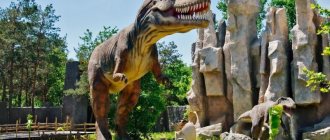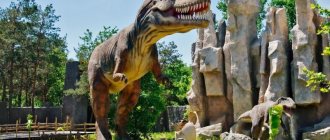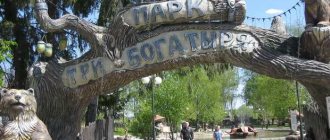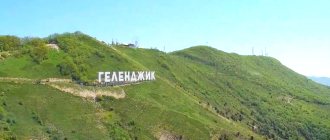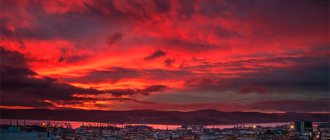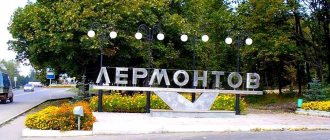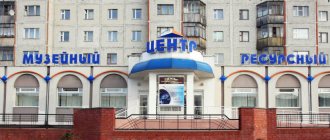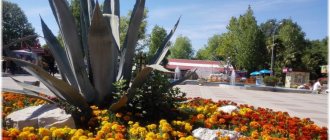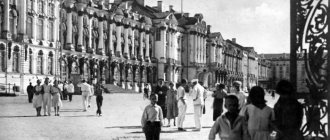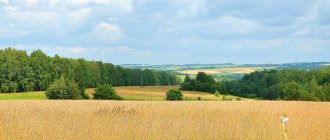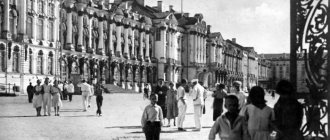Valdai is a treasure trove of natural and historical attractions. This is a land of stunning mountains and unique lakes, water streams full of fish, and rich fresh air. The city itself in the Novgorod region is one of the oldest in Russia and dates back about five centuries, according to historians. This is a place of bells and lakes, natural areas and mountain rivers. Tourists are attracted by the various attractions of Valdai. Some of them are not so famous, but that does not prevent them from being unique and amazing.
History of the national park
Valdai National Park was organized in 1990. The first Valdai Nature Reserve appeared in the early 20s of the 20th century, but ceased activity during the Great Patriotic War; until the end of the 1980s, the territory was occupied by army units with rocket launchers.
In the 1990s, the park actively established contacts with Russian and foreign environmental organizations, published books, brochures and video materials, and held scientific conferences.
The next 10 years are rich in events - the park entered the UNESCO world network of natural reserves, archaeological research is being carried out, guidebooks with tourist routes are being published, the memorial sign “Ignac Cross” is installed, scientific conferences are held, articles and books are published about the nature of Valdai.
In 2011, a visitor center was opened in the city of Valdai with an exhibition dedicated to the park. Cooperation with scientists and teachers continues, international symposiums are organized, and volunteers take part in the activities of forest districts.
A fire station was opened in 2013, and federal exercises to practice actions in case of forest fires took place in 2014. In the future, guest houses, tent sites, ecological trails will be built on the territory, and information stands will be installed.
Geographical features and characteristics of the park
The climate of Valdai Park corresponds to a moderate continental one with a small temperature range in summer and winter. In January, thermometer readings rarely fall below -15°C; in June they do not rise above +25°C.
Summer precipitation in the form of rain predominates, snow cover lasts about 4.5 months, its height is 40-45 cm. A characteristic feature of the Valdai climate is rapid weather changes during the day; long periods of stable characteristics are rare.
Most of the park's territory is occupied by forests (86%). The flora is represented mainly by coniferous (about 45% of the area) and mixed (almost 52%) forests, with oak forests found in small areas. Representatives of forest vegetation: pine, spruce, birch, and in some places aspen and gray alder.
The swamps are dominated by green moss and sphagnum; pine, birch, and sometimes spruce and black alder grow everywhere. Treeless swamps are rare. Plants of the lower tier are common in forests in the middle zone. In river creeks and lakes you can often see yellow egg capsules and snow-white water lilies.
Faunal diversity is explained by the widespread development of forests and a fairly mild climate. Common species of large animals are moose, brown bears, wild boars; predators are represented by wolves, foxes, raccoon dogs, badgers; lynx, otter, and ferret are rarely seen. Among small mammals, the hare, beaver, marten, mink, ermine, squirrel, and mice are observed everywhere.
Among birds there are many “transit” species that appear during migration or in winter. Woodpeckers, tits, herons, and black grouse are permanent residents. The black stork and predators (peregrine falcon, golden eagle and others) are included in the Red Book of Russia. The rivers and lakes are inhabited by pike, whitefish, catfish, pike perch, and sometimes grayling and trout.
The natural conditions of Valdai are unique - with moderate precipitation, a situation of high humidity has developed here, thanks to the large number of rivers, lakes and swamps. Smooth hills do not create dangerous phenomena such as landslides. Spring floods are not catastrophic, although they flood vast areas.
Rivers have winding channels, steep banks, and a sandy, clean bottom. Lakes have indented coastlines and often have bizarre shapes. Small forest lakes are shallow - 3-5 m, one of the large Valdai lakes is 52 m. Mineral springs and healing mud are found on the territory.
Glacial landscapes are observed within the park. Hills of various shapes, chains of hills give way to flat lowlands, basins with small lakes. Characterized by flat-topped hills on which swamps develop. Some of them give rise to streams and rivers.
Lake Veljo
Valdai Lake is not the only water attraction in the region. One of the largest reservoirs in the region with an area of more than 25 kilometers is a real natural pearl. Its basin contains many large and small islands, and the depths are a paradise for anglers. The pike pools and abundance of bream deserve special attention. The water of the lake is clean and suitable for drinking, because there is not a single industrial enterprise in the vicinity. Small villages in the north-west make up the entire civilization of these regions. The southeastern coast of the lake is wild and deserted.
Attractions
Valdai National Park is known for its amazing nature; lovers of historical tourism and pilgrims are attracted by its attractions.
Iversky Monastery
The construction of the monastery on Selvitsky Island in the middle of the 17th century was initiated by Patriarch Nikon, following the model of the Athos monastery of the same name. In 1655 the first inhabitants appeared. The territory was enclosed by stone walls with several towers.
Inside there were 2 cathedrals, 3 churches, chapels, a bell tower, fraternal buildings with cells, hospital buildings and for guests. The Church of the Assumption of the Virgin Mary was larger in size than many churches in Russia at that time.
Until 1917, the monastery had times of prosperity and decline, persecution and revival; soon after the revolution it was closed, the property was transferred to the state. Subsequently, the premises were occupied by museums (historical, archival and local history), workshops, a hospital, a home for the disabled, and a forest school. In the second half of the 20th century, a village was built on the island, and a recreation center was located in the monastery premises.
In 1991, the monastery was transferred to the jurisdiction of the Novgorod diocese. The restoration of all buildings begins with the strengthening of the foundations, the residential village is resettled in the city, electricity, heating, gas are installed, and a modern road is being built.
Bells were donated to the bell tower, iconostases were installed, and reliquaries were made for the relics of saints. In the Nikon Tower there is a museum of the history of the monastery and an exhibition dedicated to Patriarch Nikon. At the end of the 2000s, all domes were gold-plated for the first time.
A bus runs to the monastery from Valdai on Sundays, you can get there by taxi, or walk. Upon application, pilgrims are accepted and accommodated in the monastery hotel.
Don't miss the most popular article in the section: Metro Nizhny Novgorod. Diagram, map, description.
Ignac Cross
The memorial cross was erected in 2003 at the suggestion of the national park workers in the woods of the same name. A boulder is mounted into a concrete slab, with a 2.3 m high cross with Orthodox symbols attached to it. At the base there is a cast iron board with an inscription.
According to information from the chronicles, it was precisely this place that the Horde warriors reached in 1238 and turned back without attempting to take Novgorod and Pskov. It is still unclear to scientists why this happened, but the approximate location of the Ignach Krest tract on the banks of the Polomet River has been established.
The memorial sign was consecrated by the Archbishop of Veliky Novgorod in honor of the courage and steadfastness of Russian soldiers who died for their faith and Motherland in fierce battles.
Nikolsky fish hatchery named after V. P. Vrassky
This is the first plant in Russia engaged in breeding fish from caviar to market size. Founded in the village of Nikolskoye in 1860 by V.P. Vrassky, who achieved success in developing methods for growing and transporting fish, preserving fertilized eggs, and created a system of ponds. The results of his research are used by modern aquaculture specialists.
The plant operated successfully before the revolution, then continued operations until the Great Patriotic War. In the first months of the war, all objects on the territory were destroyed. The revival began at the end of 1945, and by the beginning of the 50s its activities were restored in full.
Currently, the plant has 54 ponds, breeds pike, crucian carp, and carp, and stocks the reservoirs of the Novgorod region with valuable commercial species. There is a museum at the plant, and excursions around the territory are offered.
Iversky Monastery
Address: Iversky Monastery Island, Valdai get there by taxi or from the pier on the motor ship "Zarya-211" Telephone: Opening hours: weekdays from 9.00 to 18.00, Sat-Sun from 13.00 to 17.00, it is advisable to pre-fill a request by phone Website : iveron.ru
The Iversky Monastery belongs to the Orthodox faith and is male. After the troubled times of Rus', this monastery was the very first to be built. The construction dates back to 1653, when small wooden churches were erected on the site of the current building under the leadership of Patriarch Nikon.
The monastery is located on the coast of Lake Valdai in a picturesque natural area, and on its territory are the relics of St. John of Borovichi, and here, in a small chapel in the garden, the Panayev family tomb is founded. The monastery complex also includes a building of fraternal cells, built on 2 floors in the Moscow Baroque style. For a long time, the Iversky Monastery possessed untold wealth, but this era ended with the fall of the tsarist regime.
Quite an interesting video about a road trip around Valdai and its environs:
If you have not yet chosen where you will live and want to save money when booking, we recommend using the RoomGuru service. Firstly, it contains hotels, apartments and guest houses from many different booking systems, so you won’t miss out on a worthwhile option. Secondly, you can immediately compare prices for one place in different services and book where it is cheaper (this is not always Booking!).
Recreation and services in the park
The national park offers recreation and excursion services in the Valdai expanses. All issues related to tourism activities are resolved at the main office or in the forestry departments.
- Since 2016, to visit the park you need to issue a ticket and make a one-time payment of 100 rubles. regardless of the time spent on the territory. An exception to the rule is local residents and their relatives, children under 7 years old, volunteers and several other categories who do not pay for their stay. There is also a discounted rate of 50 rubles.
- For recreation, park workers have built wooden houses on the shores of lakes. In the village of Polnovo, located on Lake Seliger, there is a house for 4-6 people, 3000 rubles per day for the whole house. In the village of Nikolskoye (Lake Velye) there are 6 houses for receiving guests of varying capacity (3 - 10 people) and cost (from 600 to 1700 rubles / day for each person). All houses are equipped with modern amenities, there are slopes to the water, places for barbecue and fire pits, garbage containers, and parking. To travel to the houses, you can arrange a transfer from Valdai.
- Those wishing to stay in the city can book rooms at the visitor center hotel, where guests are accommodated in 24 rooms. Accommodation in economy class rooms costs from 500 to 1000 rubles/day, in standard class from 1300 to 2000 rubles/day. In summer and on New Year's holidays, all figures increase by 100 - 400 rubles. Economy rooms have a toilet and shower on the floor. Check-in and check-out time is 12:00. There are preferential rates with a discount of 10 – 50%. It offers 2 conference and meeting rooms, a tea room, barbecue facilities, billiards, tennis tables, bicycle rental, and parking. The hotel temporarily does not accept visitors during the winter months due to renovations, but will welcome guests from March 1, 2022.
- Fans of camping are provided with special sites (80 parking lots), equipped with the necessary set of forest furniture, there are toilets, fire pits, garbage containers, information stands, and parking. Price 100 rubles/day for each vacationer, for children 7 - 14 years old 50%.
- The park has developed routes for walking and bus excursions. There are 4 ecological trails of varying lengths throughout the park. For preschoolers and elementary school students, an entertaining and educational tour “Pathfinder” is offered around the visitor center and the surrounding area.
- An additional opportunity for active recreation is an extreme route from the village of Nikolskoye on ATVs outside the park to the swamps; duration 2 days. The cost of the tour is 24,000 rubles per person, which includes equipment rental, instructor services, fuel, equipment, and food.
The location of Valdai Park on highways and railways makes it accessible to visitors, especially in summer. Therefore, rooms in hotels and guest houses should be booked in advance.
Tourist significance of the park
Valdai National Park attracts not only tourists on its territory; frequent visitors include students from surrounding schools, environmentalists, biologists, and archaeologists.
Within the park there are archaeological monuments whose age ranges from 5 thousand years to the 15th century. These are uncovered traces of dugouts, mounds, mounds, hills, pits with stone crosses. Historical monuments include numerous dilapidated noble estates of the late 18th – 19th centuries. In some places, buildings or their fragments and traces of landscape parks have been preserved.
At first, after the creation of the park, tourism was spontaneous; a system for registering and organizing visitors was gradually developed and implemented. Today, various types of tourism have been developed - from educational to religious and extreme.
The staff includes 5 specialists in tourism and environmental education, and 4 researchers are constantly working. The park hosts annual Biankov Readings, clean-up campaigns on the shores of lakes and forests, and cleans up ecological trails.
Schoolchildren, the public and volunteers provide great assistance in this regard. Excursions around the visitor center museum are regularly organized for students of different ages. The park hosts celebrations and meetings with interesting people.
Currently, employees of various educational and research institutes of Russia are conducting research in the park, and students of universities of the relevant field are also undergoing internships.
Prices in the national park
To participate in excursions, you do not have to live on the territory, but to visit the park you need to issue a ticket and make a one-time payment in addition to the cost of the excursion.
| Walking excursions | ||
| Name | Duration, hour | Price up to 10 people/more than 10 (RUB/person) |
| From Seliger to Borovno | 1 | 150/100 |
| By visitor center | 1 | 80 |
| The city streets tell a story | 1,5-2 | 200/100 |
The cost of bus excursions does not include meals, even if a visit to a cafe is included in the program.
| Bus excursions | ||
| Name | Duration, hour | Price up to 10 people/more than 10 (RUB/person) |
| Valdai springs | 1,5-2 | 200/100 |
| Mshenskie springs | 3-3,5 | 250/150 |
| Valdai-Iversky Monastery | 1 (by monastery) | 250/150 |
To hike along the ecological trail you need to have comfortable shoes, a raincoat, and repellent.
| Ecological trails | Duration, hour | Price up to 10 people/more than 10 (RUB/person) |
| Beaver | 1,5 | 200/100 |
| Forest secrets | 1,5 | 200/100 |
| Sokolovskaya | 1 | 150/100 |
| Ivan's copses | 1,5 | 200/100 |
| Pathfinder | 40 minutes | — |
At the visitor center you can buy souvenirs and printed materials dedicated to the national park.
County town museum
Address: st. Lunacharskogo, 7 Telephone: Opening hours: Mon - day off, other days: 10.00 - 18.00 Ticket price: 30 rubles
One of the eras in the development of Valdai is the time when the local region was a royal district. It is this period that all the museum’s exhibitions are dedicated to. The building is divided into five halls, thanks to which visitors can clearly trace the history of the Valdai region, get acquainted with local crafts, ancient things, and even with the Valdai families who lived in the district during the times of Tsarist Russia.
If you are interested in Russian history of this period, be sure to visit and see the sights of Torzhok and Myshkin.
Hotels nearby
Valdai National Park has its own hotel in the visitor center. Tourists can use other hotels located in the city area and explore the sights on their own.
- Complex "Valdai Dawns" located near Solovyovsky Park on the shores of Lake Valdai. Modern comfortable rooms with a minibar, heating, a restaurant, its own equipped beach, free Wi-Fi, parking - everything is at the disposal of clients. There is a conference room. Meals (buffet) are included in the total price.
For sports enthusiasts, rental of skis, bicycles, boats, catamarans, fishing. Pets are paid separately. A transfer to the Valdai railway station and the Iversky Monastery is possible.
Address: st. Molotkovskaya, 2. Price depending on capacity and time from 1750 to 4400 rubles/day, on holidays it rises to 5400–6600 rubles/day for 1 person.
- Guest house "Romanovskaya Usadba" is a Russian hut near the city center. The green area, a real bathhouse, and the proximity of the lake create the impression of relaxation in the village. The hotel has a modern level of services, free Wi-Fi, parking, beach. Breakfast is included in the total price; there is an equipped kitchen for self-cooking.
There is a rental point for skis, bicycles, ATVs, and snowmobiles. Fishing and hunting are organized. Pets are paid separately.
Address: st. Belova, 3. Price from 3000 – 4500 to 5500 – 6500 rubles/day for 1 person.
- At the guest house "Cat and Cat" There are non-standard services - warm garages in the building and a gazebo designed for any season. Otherwise, it is no different from other modern hotels with a high level of service located near the lake shore. Rooms for allergy sufferers are available. There is a kitchen for self-catering, tea and coffee are free. On the territory there is a swimming pool, a Russian bathhouse and a special room where chickens and roosters are kept. No payment is required for pets.
Address: st. Pobeda, 40. Free transfer provided. Price 2500 – 3500 rubles/day for 1 person, may increase in summer and on holidays.
- For those who want to not just relax, but improve their health, within the park on the shore of the lake. Dinner at the Valdai holiday home . This is a modern hotel complex with high-class services and the possibility of medical procedures. Located on a peninsula, there is a main six-story building, a mini-hotel, cottages and former government dachas from 1939 (reconstructed in 2010).
Medical care in the spa complex is provided by a therapist, nurses, cosmetologist and specialists in the physiotherapy room. Visitors are offered various types of massage, mud therapy, balneotherapy, and a spa capsule. Fans of active recreation can take advantage of the swimming pool, indoor tennis court, gym and billiards rooms, as well as sports facilities.
Meals (buffet) are included in the total price. In some economy class rooms, meals are paid separately. Smoking and pets are prohibited throughout the property.
Address: Roshchino village, Valdai district, Novgorod region. By arrangement, a bus is available for the night train (free transfer). It is easy to get from Valdai by taxi. The price ranges from 2,000 to 13,200 rubles/day for 1 person, depending on the place of check-in; at dachas in premium rooms it can reach 25,000–30,000 rubles/day for 1 person.
The city has many hotels of different price categories. Most are located on the lake shore.
Valdai
Video: Valdai from above
Valdai Lake
Valdai Lake is one of the ten cleanest (translated from the ancient “Vald” means “light”, “clean”). A chain of islands, on one of which there is a monastery, divides Lake Valdai into two stretches - Valdaisky and Dolgoborodsky. The lake reaches 10 km in length and 5 km in width. A narrow channel (90 meters) connects Lake Valdai with Lake Uzhin - a very narrow lake, stretching from north to south for 16 km. Where its banks almost meet, there is a village of the same name.
The lakes are replenished mainly by springs, so their water is always fresh and the bottom is clean. The lakes of the Valdai region have good sandy beaches, picturesque wooded shores, good fishing, berries and mushrooms. On the banks there is the Valdai holiday home, several tourist centers, and pioneer camps.
Holidays in Valdai
The picturesque landscapes and healthy climate of Valdai, located on the shores of the lake of the same name, attract lovers of peace and tranquility, and equipped recreation centers and guest houses create all the necessary conditions for an excellent holiday in the lap of nature.
Valdai National Park offers guests a variety of excursions, during which visitors will be able to get acquainted with the unique nature of the lake-forest complex of the Valdai Upland, and the ancient city of Valdai will delight history buffs with its “antiquities.”
Attractions
Exactly in the middle of the lake is the Selvitsky Island, on which the Iversky Monastery is located. Ryabinovy Island, the largest island, is connected to it by an artificial bridge, on the other side connected by a bridge to the mainland. One of the island’s attractions is the “mountain”, or rather a kind of hill - “Medvezhka”. Part of the island is swampy, the other part is covered with beautiful pine forest.
From the Iversky Monastery itself, founded in the 17th century by Patriarch Nikon, several original buildings have been preserved: the Assumption Cathedral, the Church of Jacob Borovichsky, the Epiphany Cathedral and the Church of Michael the Archangel. The monastery is open to visitors daily from 6:00 to 22:00. Tours can be booked at the church shop.
Also worth seeing: Trinity Cathedral (Svoboda Square), Vvedenskaya Church (Svoboda Square), roadside chapel of Jacob Borovichsky (Truda Street), Peter and Paul Church at the city cemetery.
In addition, the city has preserved many beautiful manor complexes that are worth visiting. For example, Peretno is a unique example of “wooden classicism”, late 18th century. Ozerki is the former estate of V. I. Gresser. The creative biography of the outstanding Russian composer Rimsky-Korsakov is associated with him. Gory is one of the large estate complexes of the 19th century. To date, only a few outbuildings have survived.
A monument to landscape gardening art of the second half of the 19th century, Puzyreno, located on the eastern shore of Lake Putilov. Gornešno is a classic example of a regular manor park from the first half of the 19th century. The remains of the manor house and a number of outbuildings have been preserved. Novotroitsy is one of the largest garden and park ensembles of the 18th and 19th centuries.
Valdai Iversky Monastery
On the Selvitsky island of Valdai Lake is located the Valdai Iveron Mother of God Svyatoozersky Monastery, founded in 1653 by Metropolitan Nikon of Novgorod in the image of the Iveron Monastery on Mount Athos. Then the first buildings of the monastery were two wooden churches - a cold church, consecrated in honor of the Iveron Icon of the Mother of God, and a warm church - in the name of St. Philip, Metropolitan of Moscow. Later, the construction of stone monastery churches and buildings began, the first of which in 1656 became the Iveron Cathedral, later renamed the Assumption Cathedral and to this day remaining the main building of the monastery. Currently, on the vast territory of the monastery there are several churches and chapels, a bell tower and buildings with cells.
The pilgrims will be transported to the monastery by the motor ship "Zarya-211", departing from the pier in Valdai. Alternative transportation options are a car or a taxi.
National Park
Valdai National Park is the most picturesque area in the central part of Russia. There are 70 lakes and 20 rivers in the park, surrounded by pine forests, birch groves and water meadows. In the waters of rivers and lakes there are about 30 species of fish (pike, bream, sith, pike perch, catfish, smelt, etc.) In the forests of Valdai Park there are more than 20 species of animals, 140 species of birds, 6 species of fauna listed in the Red Book (spotted deer, roe deer, white eagle, snake eater, osprey, black stork).
Valdai Museums
There are several interesting museums in the city: the Museum of the County Town and the Museum of Bells in the Church of Catherine.
Valdai Museum of the History of the County Town (7 Lunacharskogo St.; opening hours: 10:00-18:00; closed on Monday and the last Tuesday of each month). The museum's exposition provides an opportunity to learn the history of Valdai, get acquainted with the life of the indigenous Valdai residents and Valdai summer residents, and also see the peculiarities of the Russian province as a whole.
The Museum of Bells (2a Truda Street; opening hours 10:00-18:00; closed on Tuesday) is located in the building of the former route church of Catherine II, built according to the design of the architect N. Lvov in 1793 and illuminated in honor of St. Great Martyr Catherine. Among the exhibits of the museum are the very first Russian bell made by Pskov masters T. Andreev and P. Grigoriev from 1536, German bells from 1636 and 1648, Swedish trophy bells from 1680 and 1692, bells of the Russian Tsar Alexei Mikhailovich and the Swedish King Charles XI, bells cast in the 20th century. for churches, railways, ships; pit bells, table bells, gift bells, livestock necklaces and door bells. The peculiarity of the museum is that you can not only look at these exhibits, but also listen to them.
Accommodation
For lovers of a secluded holiday in the lap of nature, Valdai has numerous holiday homes, camp sites and boarding houses located in the most picturesque places. Thus, on the shore of Lake Velyo there is a recreation center “Great Lake”, on the vast territory of which (16.7 hectares) there are 40 economy class houses, 2 standard category houses, 3 cottages and 1 apartment. Free parking is available for guests.
On the territory of the Valdai National Park, guests are welcomed by the recreation center “Hunter's Shelter” - a complex of several houses and cottages designed to accommodate 40 people. Guests at the base have their own hunting ground and the services of a professional huntsman.
On Lake Glybi, on the basis of a hunting farm with an area of 38.5 thousand hectares, the Uzmen recreation center has been established, providing leisure services, including group or individual hunting and fishing.
On Lake Uzhin, on an area of 40 hectares, the Valdai holiday home is nestled, where guests can enjoy the main dormitory building, dachas and cottages.
But the recreation center “Vatsi” is located on the territory of two lakes at once, lake. Middle and lake Petrushikha. Guests can organize fishing trips, as well as hunting in the company of a professional huntsman.
For those who want to combine outdoor recreation with sightseeing in Valdai, accommodation in one of the city hotels is ideal.
Directly in the city itself, on the shores of Lake Valdai, the hotel complex “Valdai Dawns” is located, which has its own beach and offers accommodation in 88 comfortable rooms of various categories, including suites and apartments. Excursion services are available for guests.
For those who appreciate privacy, the Maracanas mini-hotel is located in a quiet area, 10 minutes from the city center and Valdai National Park. It offers single and double rooms, as well as apartments equipped with a kitchen.
Another small cozy hotel, “Jupiter”, is located on the territory of the city stadium near the Valdai National Park and has 5 rooms with a total capacity of up to 20 people.
But for families with children, it is better to consider staying at the Flagman mini-hotel, located a few minutes’ walk from the city center. The hotel has 4 rooms of different categories, and children under 7 years old can stay here for free. Excursions can be organized upon request.
And just 3 km from the city, in the resort area of the Valdai National Park, the Valdaisky Dvor hotel is located, offering accommodation in 15 rooms of various categories, designed for 30 people. The hotel is equipped with paid parking, a restaurant and a bar. Excursions around the lake (in summer), to the Iversky Monastery, the Bell Museum, etc. are organized for guests.
How to get there
From Moscow you can get by train to Pskov, St. Petersburg (get off in the city of Uglovka, 40 km, taxi 500-700 rubles) or by suburban trains to Bologoe station (from where taxi 800-1000 rubles). Travel time by train is 5.5 hours. From St. Petersburg - the same trains, but in the opposite direction, to Moscow. As well as buses from Veliky Novgorod, St. Petersburg and Tver.
Story
The first mention of Valdai Selishche in scribe books dates back to 1495. From this time, Valdai takes its chronology.
Ancient legends, which are full of Russian land, tell that once on the shore of a lake lived a young man of amazing beauty - a blacksmith named Valda. At sunrise, he went to the lake to wash, and when the water, sleeping all night, saw his beautiful face, it foamed and began to worry, splashing waves onto the shore, repeating: “Valda, Valda...”. So people began to call the water and the settlement on the shore - Valda, then Valdai.
Another legend connects the origin of the name with the toll collection point for travel along the Novgorod-Moscow highway that was once located here. The customs office in the Valdai settlement replenished the wealth of the city and even helped feed it, since the duty was taken, as a rule, in kind, including livestock and oxen. From the publican’s cry “Give me an ox!” and the name of the area was born.
Legends remain legends, but, most likely, this word has come to us from ancient times, when Finno-Ugric tribes lived here. In the Suomi language you can find the word “valta”, which means “power”, “power” and should mean something like “Tsar Lake”. In the Meri language, the word “Valdai” means “pure, light, white.”
In the first half of the 16th century, a permanent summer road from Moscow to Novgorod was built along the shore of Lake Valdai. In the 16th century, Valdai belonged directly to the department of the royal court and was called a palace village. In 1573, the village of Valdai numbered 40 households, and ten years later - 94 “traders and craftsmen”, and after another 30 years there were already 114 households.
In 1653, on one of the islands of Lake Valdai, near the village, the Bogoroditsky Iversky Monastery was founded. Alexei Mikhailovich ordered to rename his palace village of Valdai to Bogoroditsyno, and Valdai Lake to Svyatoye, donating them to the monastery along with other villages, fields, forests, swamps, rivers and lakes. Bogoroditsyno was in the possession of the Iversky Monastery until 1764.
The original name, Valdai, was returned by Catherine II.
At the end of the 1760s, Novgorod governor Ya.E. Sievers drew the attention of the Senate to the largest and most notable villages of the province, including Valdai. In 1769, Sievers, sending his “opinion” to the Senate, asked most of the residents of Valdai - arable peasants and the former monastery ministers who remained behind the staff - to be registered as merchants, and the village to be transferred to the category of cities. In order to strengthen the welfare of the new city, the governor proposed to transfer to it for eternal use lakes Valdai and Uzhin with all the sawmills and flour mills.
On May 28, 1770, Empress Catherine II issued a decree elevating the village to the status of a city. The final “organization” of Valdai as a county town and the description of the coat of arms assigned to it followed a little later in the decree of April 2, 1772. The Valdai district included 27 graveyards with 33,534 tax-paying souls.
The city coat of arms depicted an imperial crown on ermine fur, which meant “the favor of her imperial majesty to this village.” On the other part of the coat of arms there was a green mountain that looked like an impregnable cliff, standing on a silver field.
The herald's office, which prepared the coat of arms, explained in a report to Catherine II that the mountainous location was the most remarkable attraction of the city.
Valdai was one of the major trade and fishing centers of the Novgorod province. The convenient location of Valdai contributed to the development of crafts - yam racing, carriage, maintenance of inns, taverns, blacksmithing, pottery, wood carving, tile production, wide trade formed the basis of the economic development of Valdai.
According to the Topographical Description of the Province in the 70s of the 18th century, Valdai had 51 merchant shops, 5 drinking houses, a salt shop and 6 factories.
Most of the townspeople were engaged in trades, and agriculture was actually in the background, which noticeably distinguished Valdai from other district cities of the province.
Trade entrepreneurship in the second half of the 18th century reached a high level in Valdai. In addition to maintaining inns, taverns, taverns, practicing pit racing and carting, the trade in meat and bread was of particular importance for the Valdai residents.
In the 80s of the 18th century, there were 4 tanneries in Valdai, closely associated with cattle traders, as well as 4 soap factories. Raw materials for these factories (lard and ash) were purchased from the surrounding villages.
At the end of the 18th century, the “lamb” fishery became especially famous. The production of the famous Valdai bagels was widespread, and their sales were carried out far beyond the borders of the Valdai district. Buyers transported the bagels to the Pskov province and Volga region cities.
Among the artisans of Valdai, carriage makers and blacksmiths were famous. At the end of the 18th century, there were about 50 forges in the city. Blacksmiths made openers, sickles, scythes, horseshoes, rims for cart wheels, axes, etc. The products of Valdai shoemakers, who obtained leather from Torzhok, were in great demand. Many women in the city were engaged in dyeing canvases blue, weaving lace, and embroidering. Their openwork lace, tablecloths and capes were in great demand at local auctions and were sold in the markets of St. Petersburg, Riga, Moscow and other cities. Up to 300 families were engaged in this trade.
Valdai came alive on Sundays, when auctions were held. At the end of the 18th century, Valdai hosted the largest number of fairs compared to all county towns. Four times a year, merchants and trading peasants from Torzhok, Vyshny Volochok, Ostashkov, Borovichi, Bezhetsk, Novgorod and others gathered on Gostiny Pole (now Gostinopolskaya and Chernyshevsky streets) where colorful, polyphonic fairs were held. Goods purchased at the Valdai fairs were sent to Moscow, Novgorod and, increasingly, to St. Petersburg.
Some artisans specialized in making coachman's bells, large-scale production of which (the emergence of factories) began in the first half of the 19th century. In the 40s of the 19th century, 2 bell factories were already operating in Valdai. The Valdai craftsmen who cast large bells and small bells were famous throughout Russia.
There is a legend associated with the bells of Valdai. As if, after the annexation of proud Novgorod to Moscow, the Novgorod veche bell was transported through Valdai to Moscow. While driving through the Valdai area, it fell and crumbled into many bells.
Valdai bells are becoming known throughout Russia, their strength, sonority, etc. are famous.
On May 28, 1770, by decree of Catherine II, the village of Valdai received city status. The construction of the railway between Moscow and St. Petersburg caused damage to the economy of Valdai, cargo flow went by, and there were fewer people.
The bell foundry was preserved; instead of coachman's bells, it was necessary to produce fire, theater, and signal bells. The once noisy and crowded Valdai has become a quiet small town.
The so-called candle production grew rapidly. Candles were made by 3 factories that sold products to St. Petersburg and neighboring cities.
In addition, there were three tanneries, two brick factories and one oil mill.
In terms of the number of residents, stone and wooden houses, and the volume of trade, Valdai in 1844 was one of the top five among eleven cities in the Novgorod province.
The development of trade slowed down in the mid-19th century. The reason for this was the construction of the Nikolaev railway, the famous Moscow-Petersburg highway was empty. Bell production declined sharply. The blacksmith industry also fell into decline. Many former blacksmiths and cab drivers began to engage in farming and partly fishing.
Valdai grew, and the occupations of its residents became more diverse. New crafts and new professions appeared. Not only potters, painters, tailors and carpenters conquered the market. Locksmiths, and sometimes silver and goldsmiths, were also needed now.
At the beginning of the twentieth century, the city had only small, semi-handicraft enterprises. Among them, the most famous were a tannery, two bell foundries (Usachev brothers) factories, a flour mill and a sawmill. There were educational institutions (3-grade men's and women's schools, a parochial school and a school named after V.P. Ostrogorsky). The zemstvo hospital, pharmacy, drug store and almshouse served not only the city with a population of about 6 thousand people, but also residents of the county.
Environmental and social problems of the park
The territory of the Valdai National Park, in accordance with the law, is divided into several zones, each of which has its own visiting rules. Some of the areas have the status of protected areas , where specialists and scientists of the park can be located.
Volunteers help clear Valdai National Park of garbage
Access to other areas is freer - excursion trails along strictly defined routes and places where tent sites are set up, guest houses are built, fishing is allowed, and parking lots are equipped.
The Valdai region has long been one of the popular tourist destinations. Despite the founding of the park, nothing had changed in the perception of some of the population - vacationers still freely settled along the shores of the lakes, local residents cut down trees, teachers led groups of pupils or students to protected areas.
The park staff managed to rectify the situation, arrange the territory, bring order to the reception of tourists, and attract volunteers. Foresters monitor compliance with the rules established by law.
Cases of guests entering protected areas, attempts at unauthorized hunting and fishing, and lighting fires are still being recorded. Such actions harm the flora and fauna of the park; many of their representatives are listed in the Red Book of Russia or are rare species.
Some visitors leave trash behind; volunteers and inspectors constantly clean the parking areas, although trash containers are installed everywhere.
The park's managers do a lot to promote it and attract tourists. There are tour operators working in collaboration with the park; one of them has an office in the visitor center. It is convenient to use their services when choosing the best place to relax.
The national park invites those who want to relax in nature, immerse themselves in the spiritual atmosphere of the Iversky Monastery, improve their health and simply admire the beauty of the Valdai region.
Article design: Mila Friedan
Stories, routes and tips from tourists with photos
A 1-day trip to Valdai can be made very eventful if you create a route inspired by the reviews of other travelers. Most tourists also travel to Valdai for 1 day from St. Petersburg, Moscow and other cities. Travelers share the best places for photographs and tips for spending leisure time. From photographs of tourists you can form your own opinion about the weather at the time you are interested in.
- The story “In the county town V” from Alexey Panin.
- Review of the Iversky Monastery “Heart of Valdai” from Svetlana Sarycheva.
- Photo album “Valdai” from Evgeniy.
- The story “Halfway or the first acquaintance with Valdai” from Elena.
Valdai embankment Photo: © Alexey Panin
All tourist reviews about trips to Valdai
